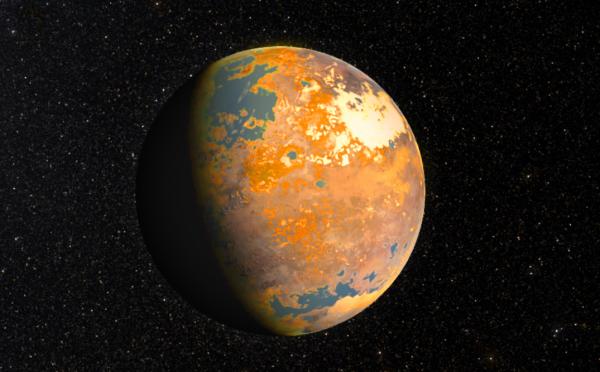BY LETTER
Whisper
Culture and Society > Myths and the Unexplained > Artefacts (Artifacts)
Galactography > Cybercosm, The
Galactography > Sephirotic Empires > Negentropy Alliance
Galactography > Regions of Space > Outer Volumes
Galactography > Systems and Worlds > Systems & Worlds W - X
Science > Biology > Xenobiology
Sophonts > Xenosophonts
Galactography > Cybercosm, The
Galactography > Sephirotic Empires > Negentropy Alliance
Galactography > Regions of Space > Outer Volumes
Galactography > Systems and Worlds > Systems & Worlds W - X
Science > Biology > Xenobiology
Sophonts > Xenosophonts
Planet covered in a sophont grassland xenoecology apparently of artificial origin |
 Image from Steve Bowers |
| System | Star: YTS 34990-191, Static Type: K5V Mass 0.69 x Sol Distance from Sol 4448 ly Constellation Lupus Planet Whisper Type AreanLacustric Mass 0.3 x Earth |
|---|
Early surveys of the planet quickly revealed its oddest feature and led to its name. Fully 50% of the planetary surface is flat grassland with only a single species of grass-like plant growing on it. The plant grows to approximately 2 meters in height and has a smooth stalk topped by a bushy head made up of many triangular leaves. As the wind blows across the plant it causes the leaves to rub against each other, producing a faint hissing sound. When combined together, the noise of the millions of plants that grow on the plains sounds very much like a huge crowd of people all whispering just at the edge of intelligibility.
 Image from Steve Bowers | |
| Whisper as seen from orbit | |
The oddly single-minded design of Whisper's ecosystem puzzled the early researchers and they studied the planet to try to learn why its unknown terraformers had created it the way they had. It was not until a century after its discovery that the hyperturing Azure Tints of Music discovered the true purpose of Whisper's grassy plains.
An in depth analysis of the sounds produced by the whisperweed as it waved in the virtually continuous breezes of the planet revealed a set of complex, ever-changing waveforms overlayed on a stable base of repeating tones. In addition, the sounds generated by one group of whisperweed seemed to affect how another part would bend in the wind and therefore the sounds it would produce. Further analysis revealed a remarkable fact. The whisperweed covered plains are in fact a gigantic biocomputer containing the uploaded minds of an estimated 5 billion intelligent beings in a virtual world. Instead of using electromagnetic signals to generate the programs that contain the minds and world of the inhabitants, the whisperweed uses sound waves generated by its own motion in the winds. The resulting virtual existence operates much more slowly than that created electromagnetically in a terragens computer matrix but is tremendously stable and resistant to damage or disruption.
It is presumed that the terraformers of Whisper are the inhabitants of its sonic virchworld. The reasons for their unique method of uploading themselves into virtual reality, or their present state after millions of years of existence within it are unknown. The whisperweed has been shown to be sensitive to sound produced by its fellow plants, but appears completely unaffected by any other stimuli. This would seem to indicate that the inhabitants of the Whisper network are totally cut off from the external world and may be complete solipsists. For this reason, no attempt at communications with them has yet been made although several petitions to do so are currently being considered by the local hyperturing review board.
Whisper is sometimes regarded as an example of the rare class of xenosophont envomes, sentient alien ecospheres; but whether this example has evolved naturally or was engineered by a long vanished race is not yet certain. Other examples of this class of planet include Steelcliff, Clive's Brain and Kammerer.
Related Articles
Appears in Topics
| Artefacts (Artifacts) | Cybercosm, The | Negentropy Alliance |
| Outer Volumes | Systems & Worlds W - X | Xenobiology |
| Xenosophonts |
Development Notes
Text by Todd Drashner
Initially published on 29 December 2002.
Initially published on 29 December 2002.






